Arnoud Bodde: Awaiting the King of Tone
Here’s my pedalboard, coming to you from Groningen, Netherlands. I built it last year, and it’s actually my very first pedalboard.At the bottom is my guitar, a fiesta red Fender Custom Shop NoNeck NOS 1960 Stratocaster, which I bought from a guy in the U.S. five years ago. It replaced my Sunn Mustang Strat (also fiesta red) that had served me for 26 years. I still have it, of course.
Now for the pedalboard. My guitar goes into the GigRig QuarterMaster 10. The QM10 serves as switcher for these 10 pedals:
- King Tone Blues Power (always on)
- Keeley Katana Blues Drive
- This loop is still open. I’ve been on the Analog Man King of Tone waiting list for more than three years now, so it shouldn’t be much longer.
- Electro-Harmonix POG2
- Line 6 DM4 Distortion Modeler (the four presets I use are all quite fuzzy)
- Marshall Blues Breaker
- Katana Clean Boost
- Boss GE-7 Equalizer
- T-Rex Replica (almost always on)
- Ibanez DE7 (always on in echo mode, my very first pedal, it’s 25 years old)
Then, the output of the QuarterMaster goes into the small buffered splitter from JHS. The two outputs go into a 3-channel stereo switcher. I bought that secondhand from a guy who had it custom made.
The stereo switcher has four pedals connected to it:
- Loop 1: TC Electronic Mimiq Doubler that goes into the Strymon Mobius
- Loop 2: Korg SDD-3000 (always on, the preamp ads a nice kind of warmth to the sound)
- Loop 3: GFI System Specular Tempus
After the stereo switcher, the two outputs are connected to the Boss RC-3 Loop Station that has an extra footswitch connected to it. The two outputs of the RC-3 go into two Fender Champion 50XL amps. All of the pedals are connected to the Strymon Zuma and a non-visible Strymon Ojai that fits under the pedalboard. The Line6 DM4 and the Korg SDD-3000 have their own power supply. The Zuma can move to the bottom when the Analog Man King of Tone is finally mine. (Oh yes, it will be mine!)
Cables are all cut-to-size Evidence Audio SIS brand, except the stereo cables. They are Rockboard Flat Y splitter cables and a couple of custom-made ones by Dr. Tube (a guy here in the Netherlands who does really great work fixing amps and stuff), because the Rockboard ones are only 30 cm. The pedalboard is a Pedaltrain Terra 42. Velcro was supplied by Pedaltrain.
I bought most of the pedals secondhand, and traded some stuff, too. The JHS splitter box, the Strymon Zuma and Ojai, the QuarterMaster, and the Ibanez DE7 were bought new. I bought the latter 25 years ago when I was 15. Keep up the great work!
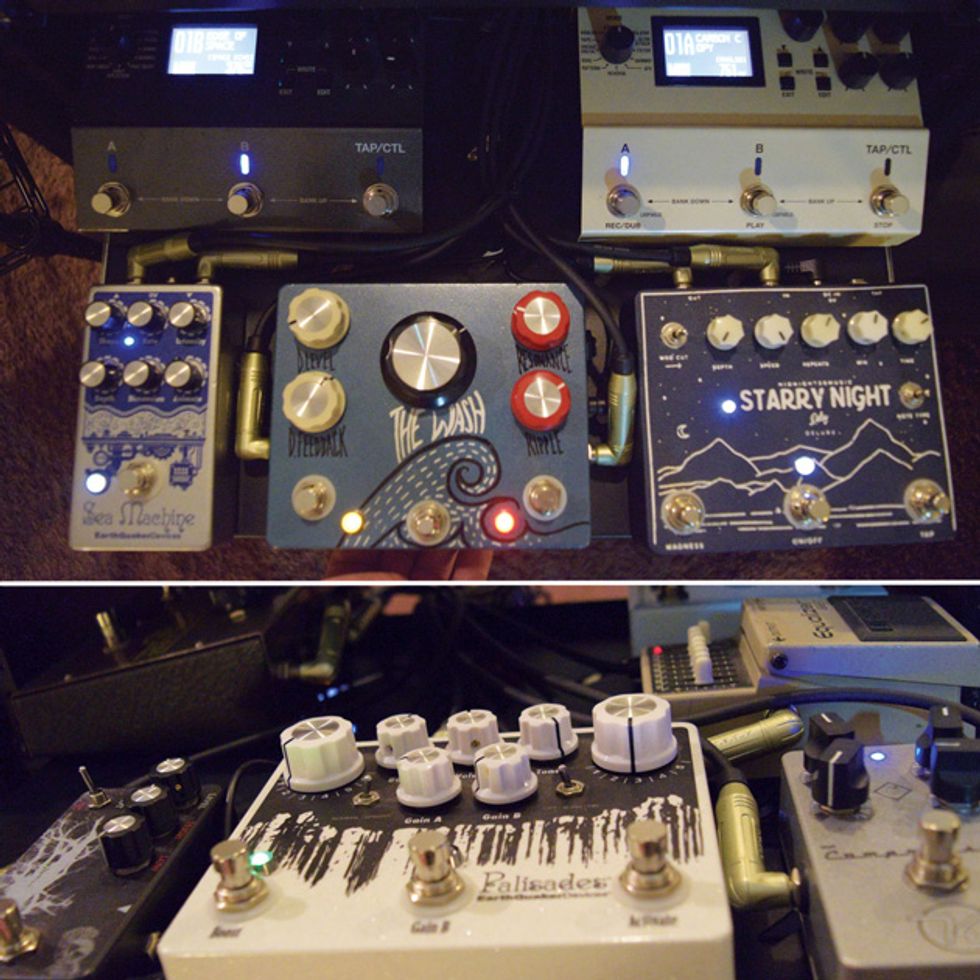
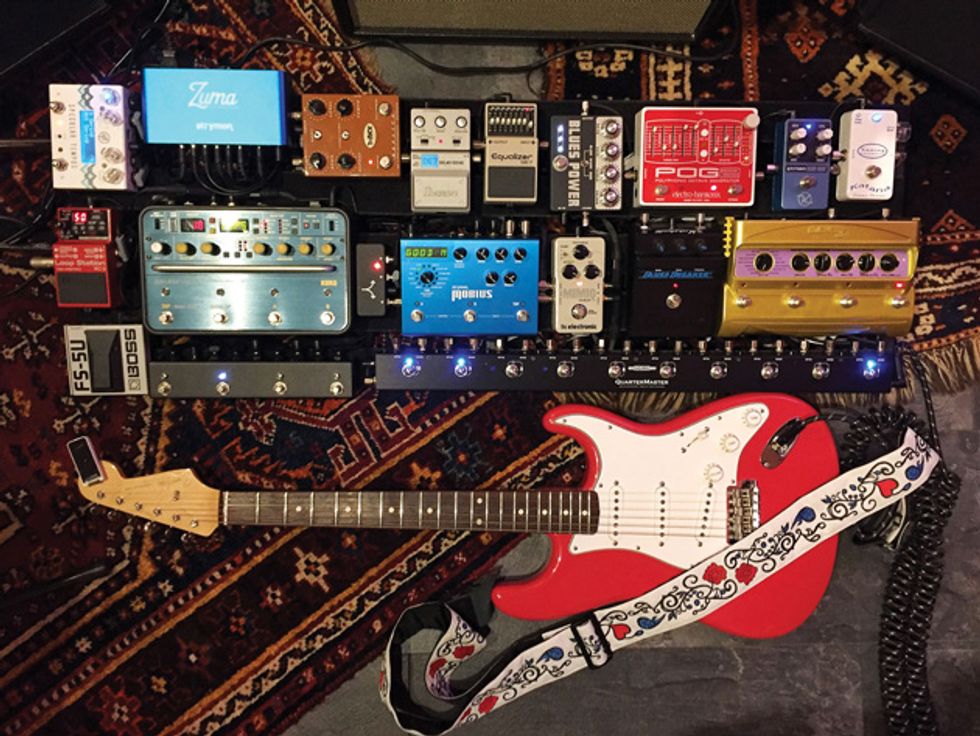
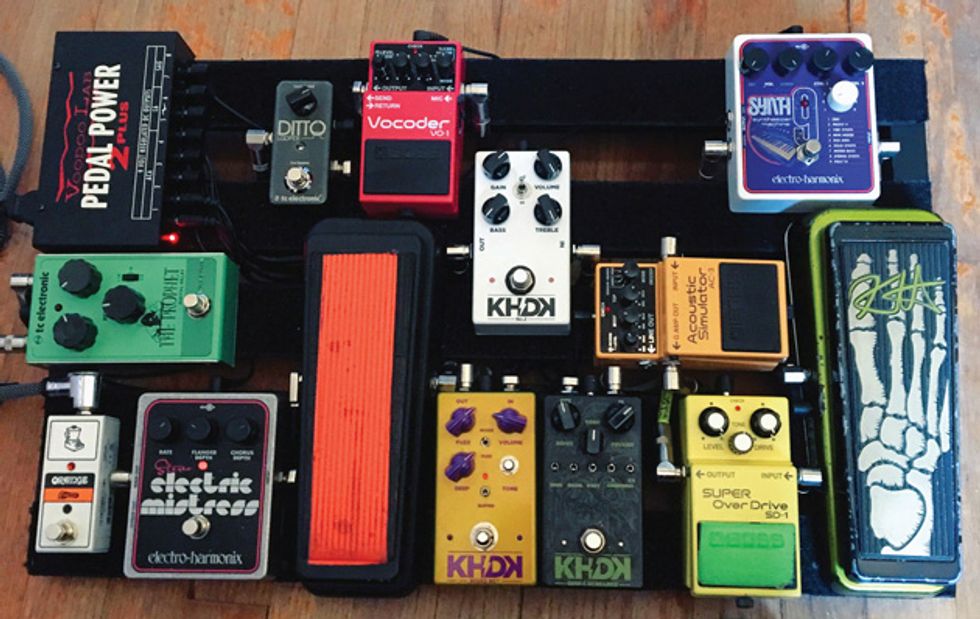
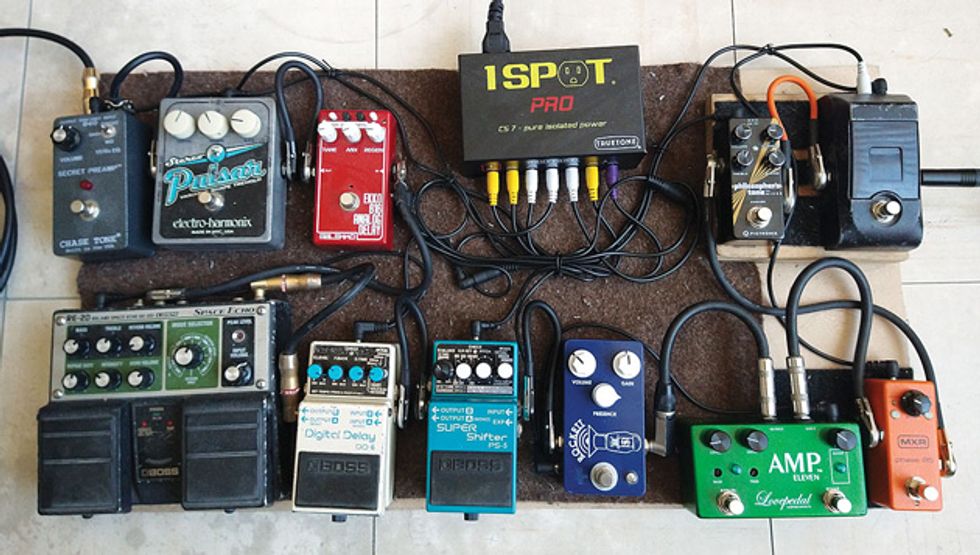
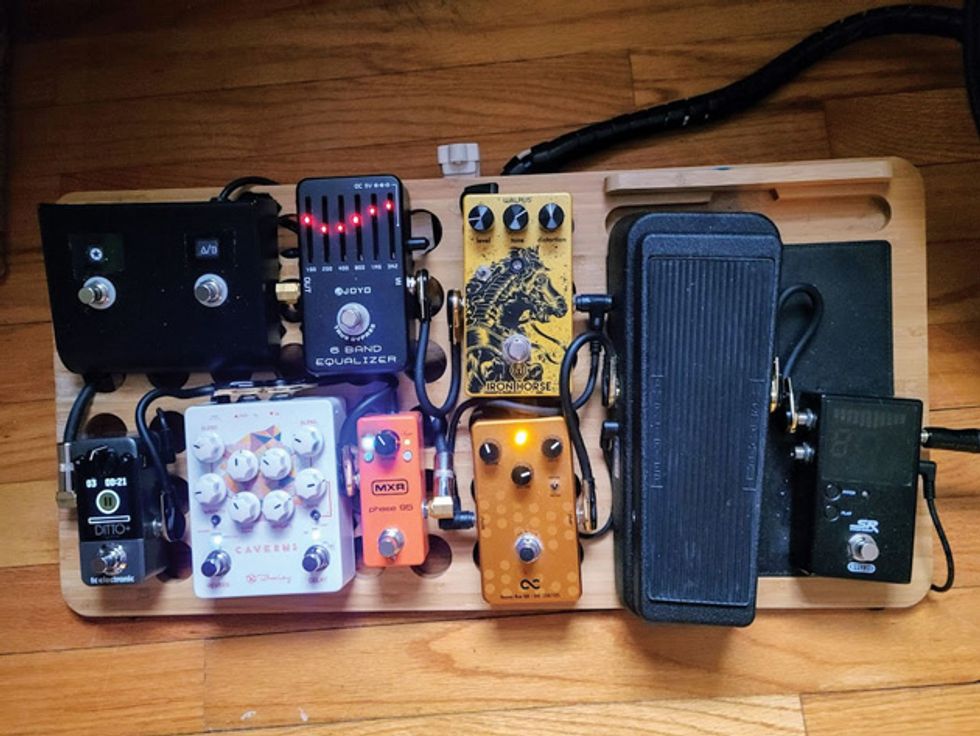
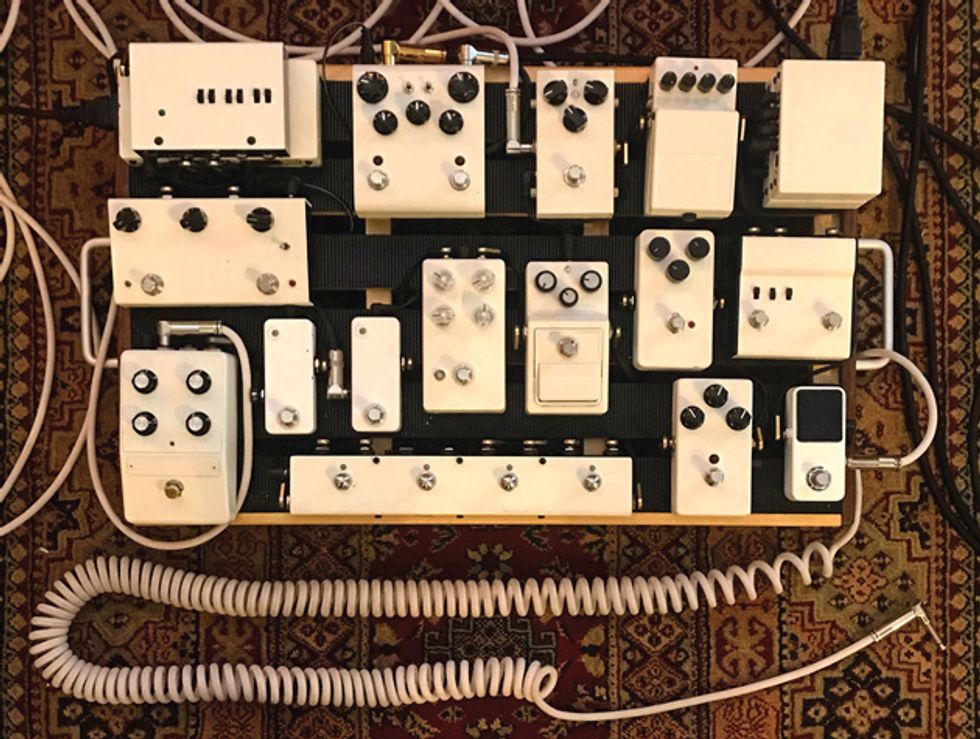
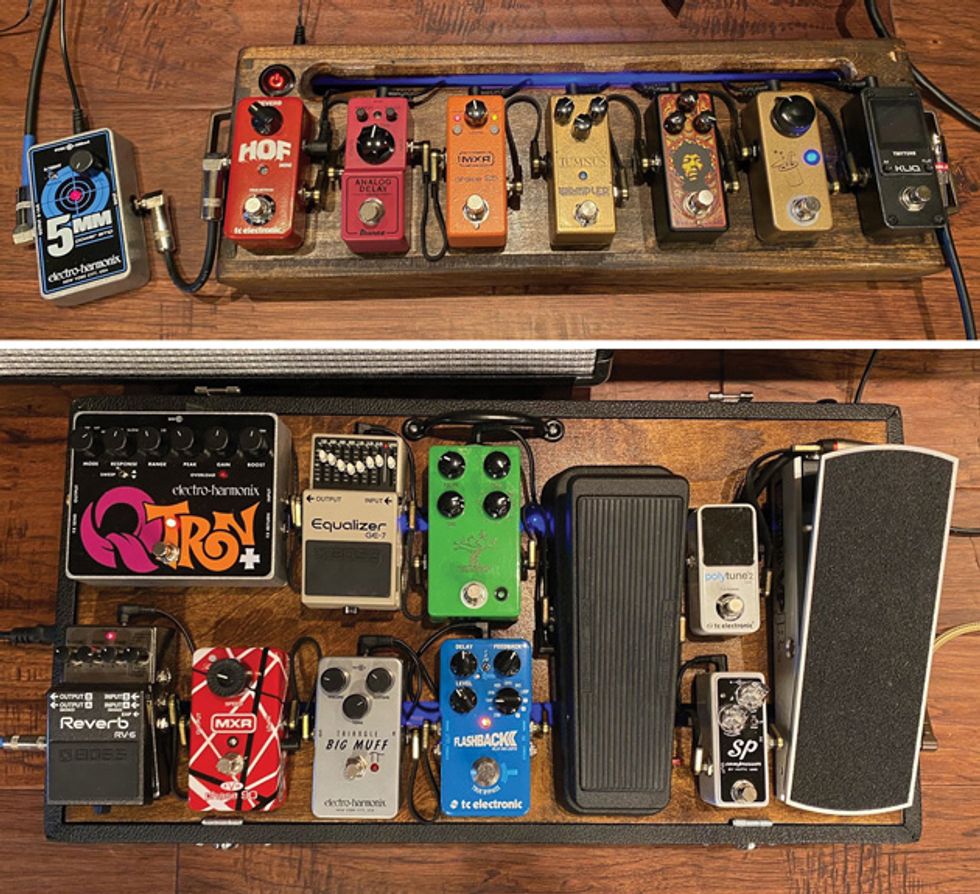
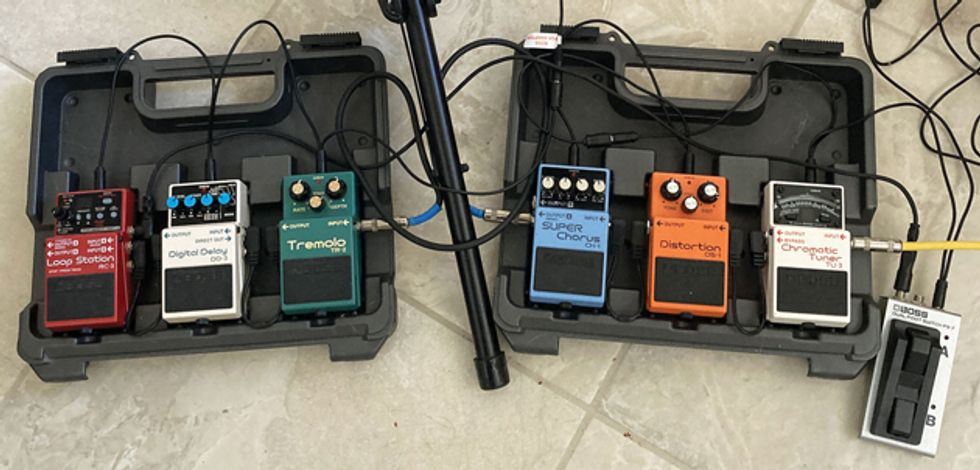
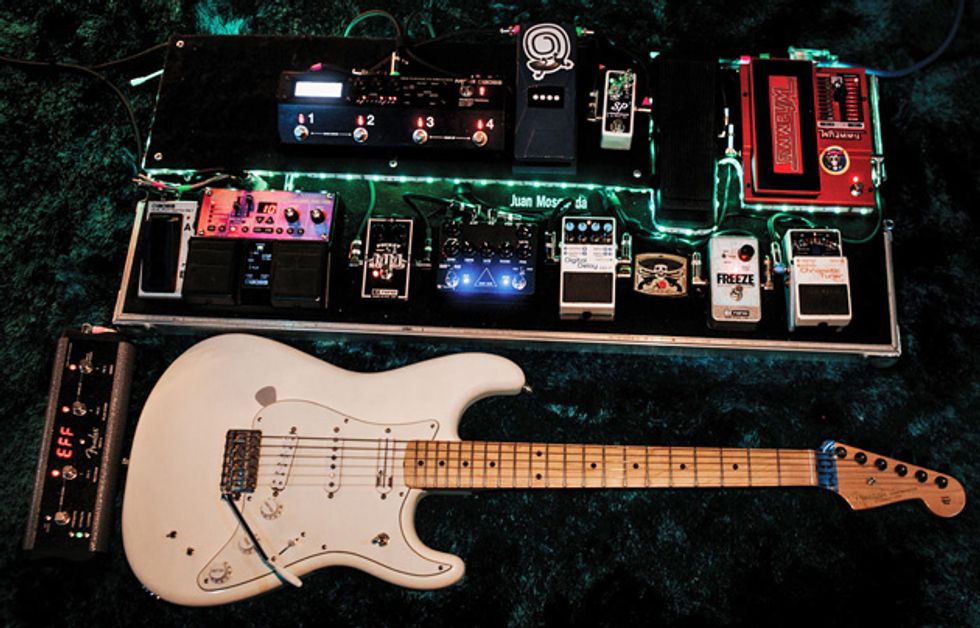
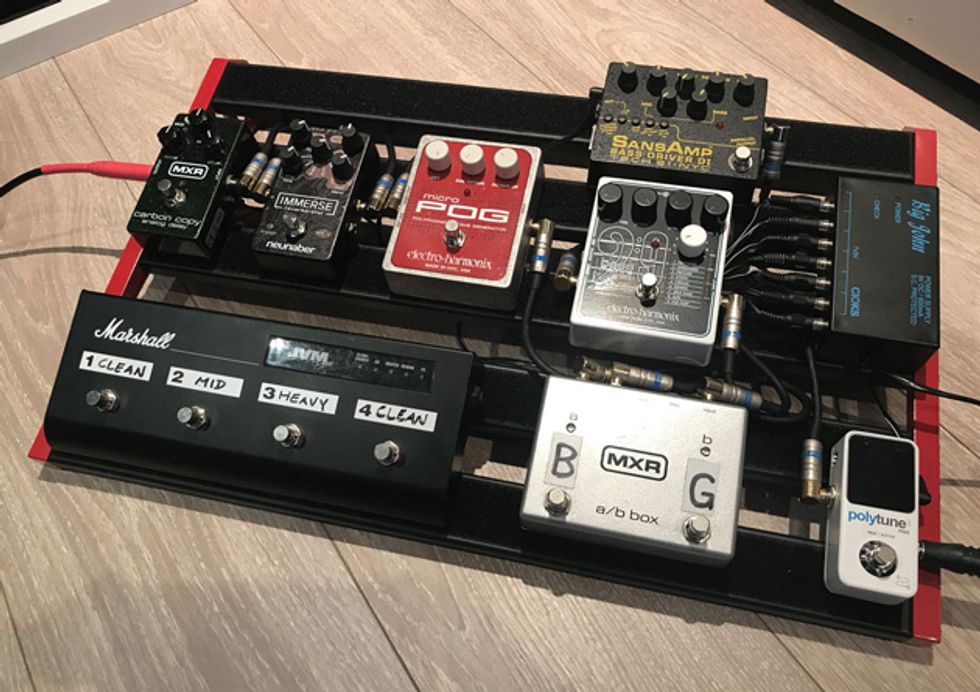
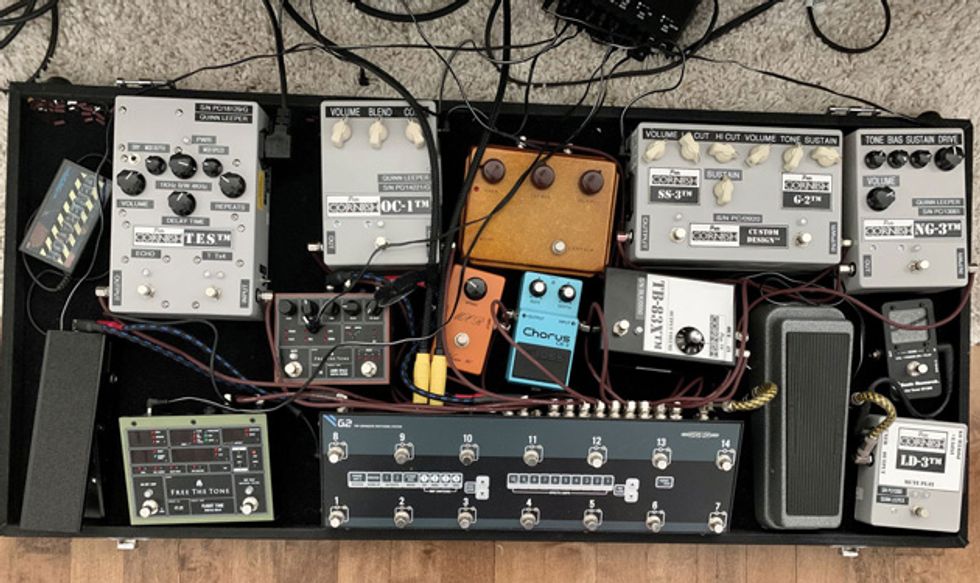
It’s that time of year, when Premier Guitar readers get the chance to show their pedalboards, and how they use them to create worlds of sound. There’s no wrong way to signal a stomp—the options are virtually endless. Read on to see what players have been cooking up in their COVID guitar bunkers. A few highlights include a completely white-washed mystery pedalboard, a retirement bucket list project from a 62-year-old beginner, an elaborate rackmounted setup made with a goal to streamline pedal-Tetris, and much more. Enjoy!






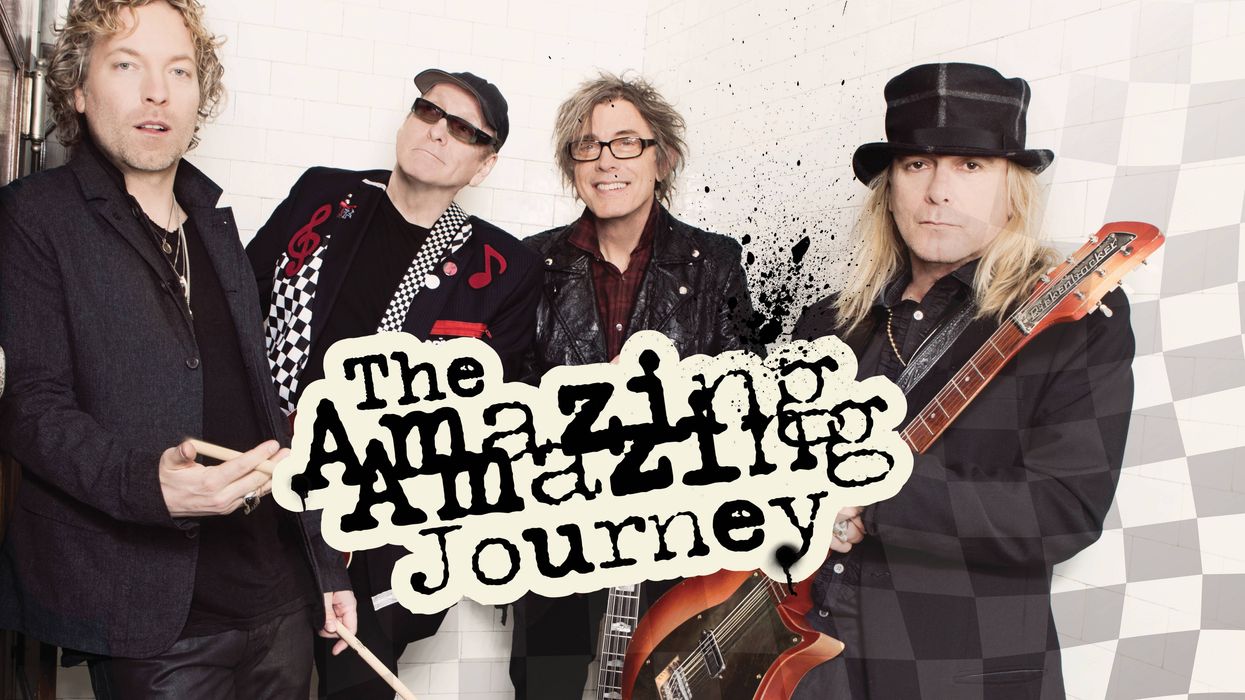

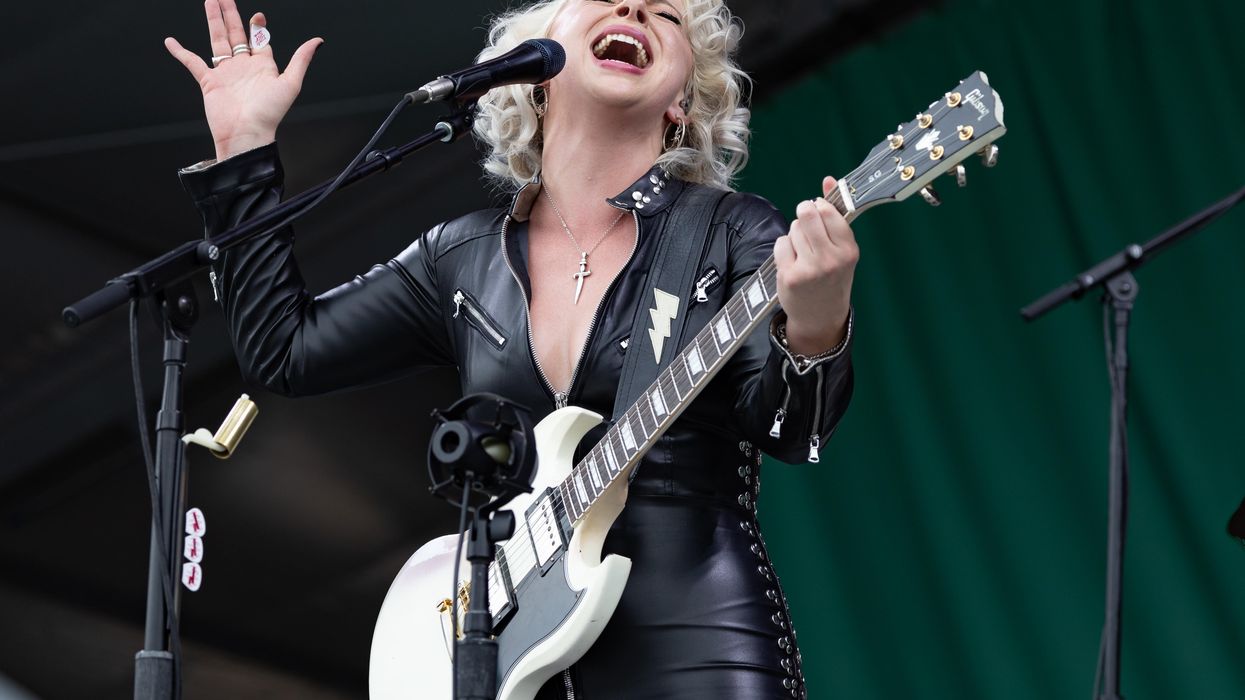


![Devon Eisenbarger [Katy Perry] Rig Rundown](https://www.premierguitar.com/media-library/youtube.jpg?id=61774583&width=1245&height=700&quality=70&coordinates=0%2C0%2C0%2C0)
![Rig Rundown: AFI [2025]](https://www.premierguitar.com/media-library/youtube.jpg?id=62064741&width=1245&height=700&quality=70&coordinates=0%2C0%2C0%2C0)












 Shop Scott's Rig
Shop Scott's Rig







 Zach loves his Sovtek Mig 60 head, which he plays through a cab he built himself at a pipe-organ shop in Denver. Every glue joint is lined with thin leather for maximum air tightness, and it’s stocked with Celestion G12M Greenback speakers.
Zach loves his Sovtek Mig 60 head, which he plays through a cab he built himself at a pipe-organ shop in Denver. Every glue joint is lined with thin leather for maximum air tightness, and it’s stocked with Celestion G12M Greenback speakers.








